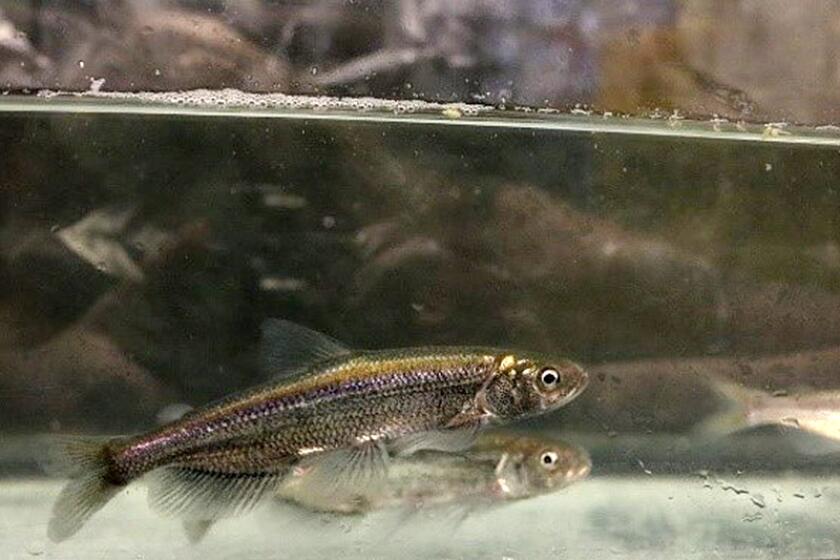Catalina Island wild foxes coming back in a big way
- Share via
Reporting from Avalon — The population of endangered wild foxes on Santa Catalina Island soon could recover to levels not seen in a decade since canine distemper decimated them, biologists said Monday.
Standing beside a sign posted along a main road urging people to watch for foxes, Carlos de la Rosa, the Catalina Island Conservancy’s chief conservation and education officer, said, “Soon we’ll have more than 1,300 foxes. But reaching that number is not, in and of itself, as great an achievement as bringing them back from the brink of extinction to a population that is stable and able to sustain itself.”
The population had crashed to about 100 in 1999, when the conservancy and the Institute for Wildlife Studies launched a $2-million recovery program that includes vaccinations, aerial monitoring and education programs.
A captive breeding program here ended in 2004, the same year the U.S. Fish and Wildlife Service listed the cat-sized subspecies as endangered. About 950 Catalina Island foxes call the island home, up from 784 at this time last year, according to a recent islandwide trapping effort by conservancy wildlife biologists Julie King and Calvin Duncan.
The foxes are trapped once a year and inspected for illnesses, including an unusual, potentially fatal ear cancer that recently began showing up in older foxes.
The animal’s remarkable recovery was spurred, in part, by several years of fluctuations in the weather. An extreme drought in 2007 resulted in the deaths of significant numbers of mule deer, whose carcasses were scavenged by the omnivorous 5-pound foxes. By the time breeding season arrived in 2008, many foxes were literally obese, and females were in such good condition that they were having larger-than-normal litters.
Good rains the past two years triggered an abundance of fruit-bearing cactuses and a population explosion of mice, convenient prey for female foxes to feed to their pups.
Also playing a big role in the recovery has been the island mascot, Tachi, a captive bred fox that became a popular ambassador for the cause in school functions and fundraisers. “Tachi helped us raise $14,000 in donations last year,” King said.
The fox, found only on the 75-square-mile island 22 miles off the coast of Southern California, continues to face challenges that are expected to delay efforts to have it taken off the federal endangered species list.
On an island shared by 3,000 humans, the leading cause of death for foxes is “roadkill.” With no natural predators, foxes are fearless and frequently wander out to sniff at passing automobiles. The foxes are also threatened by pet dogs. A week ago, a fox was attacked and killed by an untethered dog, a scenario biologists say occurs nearly every year.
“We lose a total 15 to 20 foxes a year,” King said. “About eight to 10 of those are roadkill.”
louis.sahagun @latimes.com
More to Read
Sign up for Essential California
The most important California stories and recommendations in your inbox every morning.
You may occasionally receive promotional content from the Los Angeles Times.











